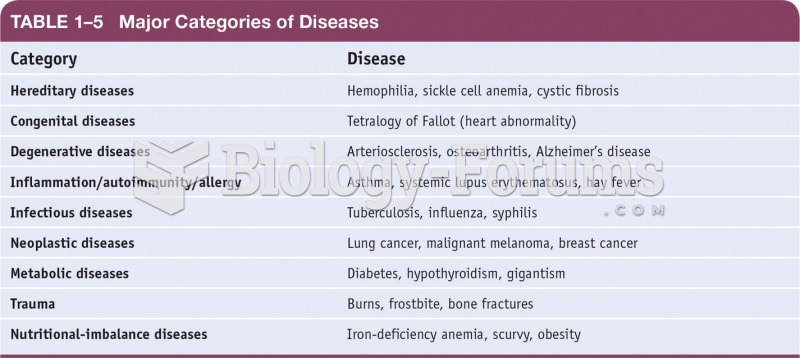Answer to Question 1
Practically all states now require mandatory genetic screening programs for various disorders. There are about 2,000 human disorders caused by defective genes, and it is estimated that each of us carries two or three of them. Mass genetic screening could eliminate some of these disorders. More and more pregnant women are being encouraged to terminate pregnancy if a fetus will be (or is at a high risk of being) genetically inferior. In addition, some genetic disorders can be corrected if diagnosed in time.
Genetic screening programs raise serious questions. Which fetuses should be allowed to continue to grow and which should be aborted? Who shall be allowed to have children? Who shall make such decisions? Is this a direction our country ought to take? Genetic screening during pregnancy can be used to detect a wide variety of inherited disorders. For example, Huntington's chorea is an inherited disease in which the principal symptoms are involuntary movements-either rapid, forcible, and jerky or smooth and sinuous. This disorder is often associated with loss of intellectual abilities. Its onset is usually evidenced during middle age. If a fetus is diagnosed as having the gene for this disorder, which usually results in serious mental and physical deterioration in midlife, the pregnant woman and her partner would then be faced with the heart-wrenching decision of whether it would be best to terminate the pregnancy.
The eugenics (scientific breeding) movement was proposed late in the 19th century and embraced by many scientists and government officials. Similar to today, eugenics was designed to improve humanity or individual races by encouraging procreation by those deemed most desirable and discouraging it in those judged deficient.
Answer to Question 2
In the future, the family is likely to be substantially affected by technological breakthroughs in biology and medicine. A few developments in these areas are the following:
Artificial Insemination: Thousands of babies are born annually in the United States through the process of artificial insemination, with the usage expected to continue to increase in the future.
Surrogate Motherhood: Thousands of married couples who want children but are unable to reproduce because the wife is infertile have turned to surrogate motherhood. With this type of motherhood, a surrogate gives birth to a baby conceived by artificial insemination using the husband's sperm. At birth the surrogate mother terminates her parental rights, and the child is then legally adopted by the sperm donor and his wife.
Test-Tube Babies: In England, on July 24, 1978, Lesley Brown gave birth to the first test-tube baby. An egg taken from her reproductive system had been externally artificially impregnated using AIH (artificial insemination-husband) and then implanted in her uterus to complete the normal process of pregnancy. The technique, called embryo transfer, was developed for women whose fallopian tubes are so damaged that the fertilized egg cannot pass through the tubes to the womb as is necessary for it to develop and grow until birth. Following the announcement of this birth, there was a surge of applications from thousands of childless couples asking fertility experts for similar implants.
Genetic Screening: Practically all states now require mandatory genetic screening programs for various disorders. There are about 2,000 human disorders caused by defective genes, and it is estimated that each of us carries two or three of them. Mass genetic screening could eliminate some of these disorders. More and more pregnant women are being encouraged to terminate pregnancy if a fetus will be (or is at a high risk of being) genetically inferior. In addition, some genetic disorders can be corrected if diagnosed in time.
Cloning: Cloning refers to the process whereby a new organism is reproduced from the nucleus of a single cell. The resultant new organism has the same genetic characteristics of the organism that contributes the nucleus. In effect, it is now possible to make biological copies of humans from a single cell. Biologically, each cell is a blueprint containing all the genetic code information for the design of the organism. Cloning has already been used to reproduce frogs, mice, cattle, sheep, pigs, and other animals.
Stem Cells: Recent studies suggest that stem cells may hold the secret to treatment, or even cures, for some of our most baffling diseases and injuries, including Alzheimer's, Parkinson's, cancer, diabetes, spinal cord injuries, and other diseases. Stem cells have the remarkable potential to develop into many different cell types in the body. In addition, in many tissues they serve as a sort of internal repair system, dividing essentially without limit to replenish other cells. There are currently three types of stem cells: embryonic stem cells, adult stem cells, and induced pluripotent stem cells.







